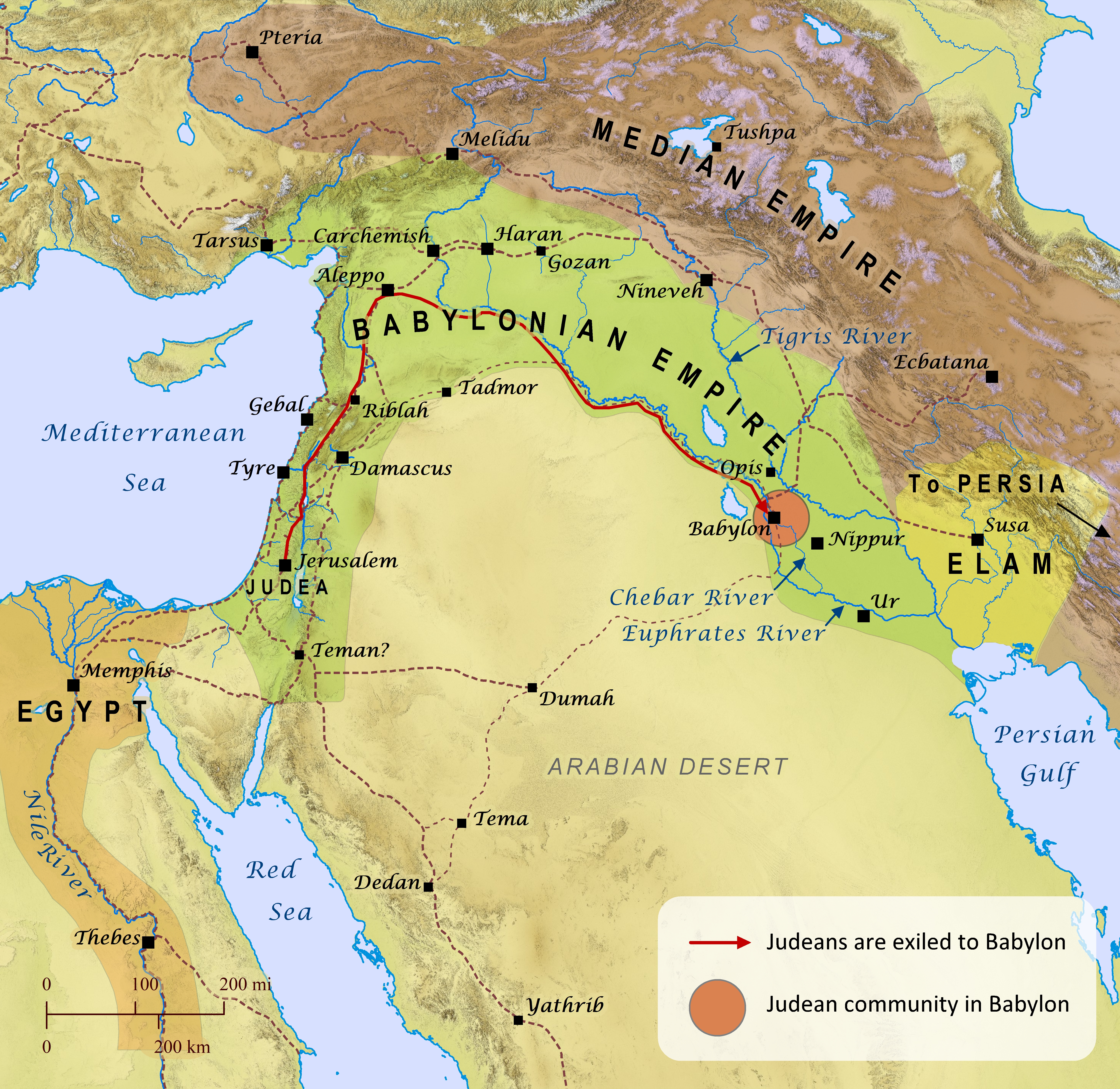Note: This view shows ‘verses’ which are not natural language units and hence sometimes only part of a sentence will be visible—click on any Bible version abbreviation down the left-hand side to see the verse in more of its context. Normally the OET discourages the reading of individual ‘verses’, but this view is only designed as a tool for doing comparisons of different translations—the older translations are further down the page (so you can read up from the bottom to trace the English translation history). The OET segments on this page are still very early looks into the unfinished texts of the Open English Translation of the Bible—please double-check these texts in advance before using in public.
OEB No OEB DAN book available
WEBBE Now amongst these of the children of Judah were Daniel, Hananiah, Mishael, and Azariah.
WMBB (Same as above)
NET As it turned out, among these young men were some from Judah: Daniel, Hananiah, Mishael, and Azariah.
LSV And there are among them out of the sons of Judah, Daniel, Hananiah, Mishael, and Azariah,
FBV Among those chosen were Daniel, Hananiah, Mishael, and Azariah, from the tribe of Judah.
T4T Among the young Israeli men who were chosen were me, Daniel, and Hananiah, Mishael, and Azariah, who all came from Judah.
LEB Now there was among them ⌊from the Judeans⌋,[fn] Daniel, Hananiah, Mishael and Azariah.
BBE And among these there were, of the children of Judah, Daniel, Hananiah, Mishael, and Azariah.
Moff Among these were Daniel, Hananiah, Mishael, and Azarlah, from Judah.
JPS Now among these were, of the children of Judah, Daniel, Hananiah, Mishael, and Azariah.
ASV Now among these were, of the children of Judah, Daniel, Hananiah, Mishael, and Azariah.
DRA Now there were among them of the children of Juda, Daniel, Ananias, Misael, and Azarias.
YLT And there are among them out of the sons of Judah, Daniel, Hananiah, Mishael, and Azariah,
Drby Now among these were of the children of Judah, Daniel, Hananiah, Mishael, and Azariah.
RV Now among these were, of the children of Judah, Daniel, Hananiah, Mishael, and Azariah.
(Now among these were, of the children of Yudah, Daniel, Hananiah, Mishael, and Azariah. )
SLT And there will be among them from the sons of Judah, Daniel, Hansniah, Mishael, and Azariah.
Wbstr Now among these were of the children of Judah, Daniel, Hananiah, Mishael, and Azariah:
KJB-1769 Now among these were of the children of Judah, Daniel, Hananiah, Mishael, and Azariah:
(Now among these were of the children of Yudah, Daniel, Hananiah, Mishael, and Azariah: )
KJB-1611 Now among these were of the children of Iudah, Daniel, Hananiah, Mishael, and Azariah:
(Modernised spelling is same as from KJB-1769 above)
Bshps Among these nowe were certayne of the children of Iuda: namely Daniel, Ananias, Misael, and Azarias.
(Among these now were certain of the children of Yuda: namely Daniel, Ananias, Misael, and Azarias.)
Gnva Nowe among these were certeine of the children of Iudah, Daniel, Hananiah, Mishael and Azariah.
(Now among these were certain of the children of Yudah, Daniel, Hananiah, Mishael and Azariah. )
Cvdl Amonge these now were certayne of the children off Iuda: namely Daniel, Ananias, Misael and Azarias.
(Among these now were certain of the children off Yuda: namely Daniel, Ananias, Misael and Azarias.)
Wycl Therfor Danyel, Ananye, Myzael, and Azarie, of the sones of Juda, weren among hem.
(Therefore Danyel, Ananye, Myzael, and Azarie, of the sons of Yuda, were among them.)
Luth Unter welchen waren Daniel, Hananja, Misael und Asarja von den Kindern Judas.
(Under which_(ones) were Daniel, Hananya, Misael and Asarya from the children Yudas.)
ClVg Fuerunt ergo inter eos de filiis Juda, Daniel, Ananias, Misaël, et Azarias.
(Fuerunt therefore between them from/about to_the_children Yuda, Daniel, Ananias, Misaël, and Azarias. )
RP-GNT No RP-GNT DAN book available
